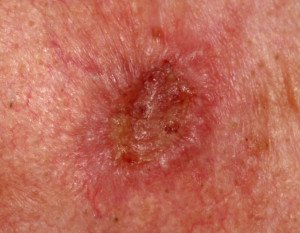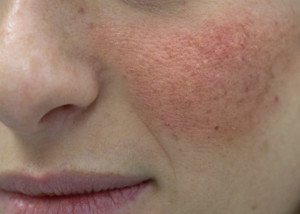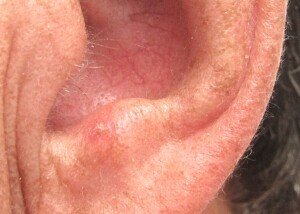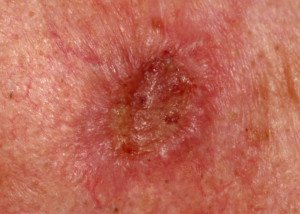There’s a percentage range of actinic keratoses turning into squamous cell carcinoma, which is why these seemingly harmless skin lesions should never be ignored.
Furthermore, the appearance of very early squamous cell carcinoma can mimic actinic keratosis.
“The lifetime risk of actinic keratosis to progress to squamous cell carcinoma is two to five percent,” says Vishal Madan, MD, consultant dermatologist, laser and skin cancer surgeon, and founder/director of Everything Skin Clinic™.
Dr. Madan explains, “Small flat actinic keratosis may never progress to squamous cell carcinoma, while a tender, thick, hyperkeratotic AK has a higher risk of progression to SCC — especially if there are other risk factors such as immunosuppression, previous history of SCC or severely sun damaged skin.”
The Journal of the American Academy of Dermatology (Callen et al) states, “Estimates of the percentage of these chromosomally abnormal skin lesions that convert to squamous cell carcinoma vary from 0.25% to 20% per year for an individual lesion.”
The paper continues, “It is impossible to predict accurately in which patient a squamous cell carcinoma will develop.”
The percentage ranges may be broad, depending on the particulars of an investigative study.
Nobody really knows an exact percentage, since studies do not round up people with actinic keratoses and then instruct them never to get these precancerous lesions treated and then follow them for the rest of their lives.
What’s known for sure is that the percentage is small rather than significant, but high enough that people with actinic keratoses should get these lesions removed, even if it takes multiple attempts.
They are removed via either a spraying directly onto the lesion with frozen nitrogen, or a prescription cream applied directly onto the lesion.
“Actinic keratoses must be treated to prevent their conversion to squamous cell carcinoma,” continues the JAAD paper.
If you’ve been diagnosed with actinic keratosis, then it’s a no-brainer: Get them treated — even if they aren’t that visible.
AK’s grow very slowly and may be much more progressed before you even know it.
You don’t want to be in that small percentage whose actinic keratoses transforms into a malignancy.
The cancer will never be melanoma; it’s squamous cell carcinoma.
However…SCC can be fatal – because it will metastasize if not treated.
Don’t confuse SCC with basal cell carcinoma, for which metastasized cases are exceedingly rare – and only then, due to neglect.
Actinic keratosis are extremely common.
This is why many dermatologists have a canister or two of liquid nitrogen sitting on their office desk, ready for use.
You may have a few lesions right now and not even know it. This is why (in addition for melanoma screenings) you should have a clinical skin exam by a dermatologist every year.
AK’s can mimic seborrheic keratoses. Do not self-diagnose. See a dermatologist.















